By Eilene Lyon
After completing my archive research in California (Huntington Library, Bancroft Library, and the California Historical Society), it was time to do some gold rush sight-seeing. My first stop was the Wells Fargo branch on Montgomery in downtown San Francisco. This city owes its explosive growth directly to the gold rush. Wells Fargo was only one of many express services at that time, but the most enduring.
This branch houses a free museum dedicated to the company’s gold-rush origins, their express services, a history of banking and U. S. currency, and many other related subjects, predominantly from the 19th century. Not the least of the objects housed there are two original Concord stagecoaches. These were custom-built for Wells Fargo in Concord, New Hampshire, by the Abbot-Downing Company, and weigh over 2,000 pounds. You can even take a simulated coach ride during your visit.
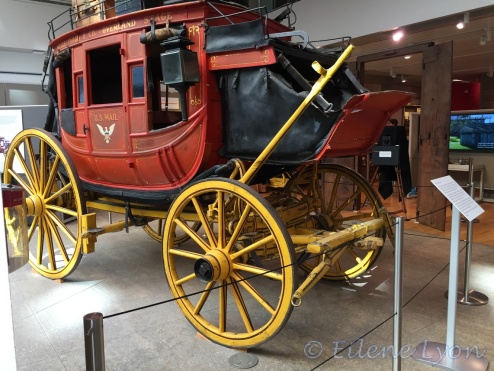

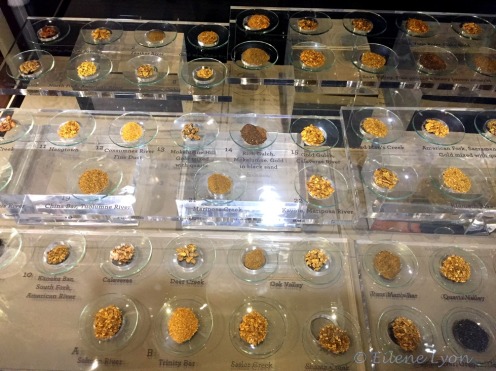

Leaving Berkeley the following morning, I headed out to visit several towns that my relatives had a connection to in the 1850s to 1870s. I hadn’t planned this portion of my trip, so it wasn’t too surprising that I missed the opportunity to visit the Solano County Genealogical Society in Vacaville when they were open. My 3rd great-uncle and aunt lived in Vacaville in the 1850s. A daughter was born and a son died there.
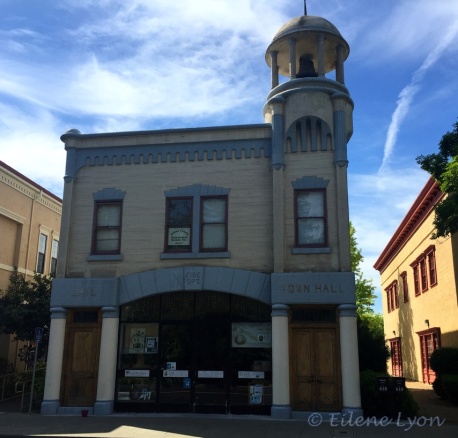
From Vacaville, I wound my way along small rural roads through farms and orchards, heading to Yuba City, a place where Elias D. Pierce and his first partners had lived for a time. One of them, John W. Lane, purchased two town lots from Samuel Brannan, the man who had loudly announced to San Franciscans the gold find on the American River, leading to a stampede out of town. Downtown Yuba City has a real ‘50s feel – the 1950s, not the 1850s, unfortunately.
Across the river lies Marysville, an even earlier settlement, but equally unimpressive. This was frequently the jump-off point for those heading to the Feather River mines and sits at the confluence of the Feather and Yuba Rivers. My ultimate destination was Georgetown, so I continued east to Grass Valley, then back south toward Auburn.
I managed to pop into the mining museum at the Auburn railroad depot just 15 minutes before closing time. Though small, the exhibits were excellent. I’ll have to return for a closer examination. They didn’t photograph well, because the exhibit lights were off and the room lights reflected off the glass.
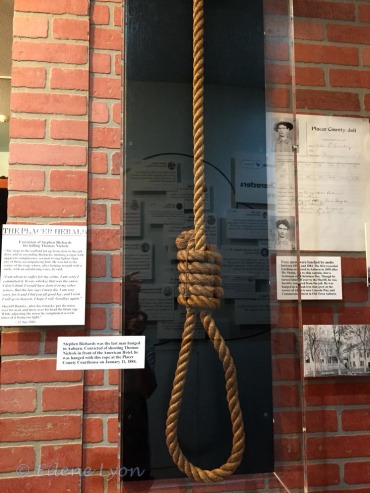
Georgetown figures in the family history from about 1870 to 1880. My cousin Sam Jones and family, and his sister and brother-in-law, Rebecca and Elias D. Pierce, lived there and had a mine on the Middle Fork of the American River called the Sardine Placer Mine. I suspect it was something of a debacle.

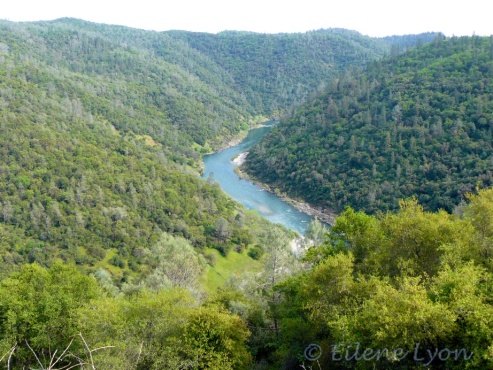
Today, in order to get to the Sardine claim, you have to hike in. I have no idea how they got all the mining equipment in and out of there. The river canyon is incredibly narrow and steep. I did find a little-used two-track down to the river a bit north of their claim. Being used to mining roads here in the Colorado mountains, it didn’t faze me, but it’s not something most people would want to take a passenger car down!
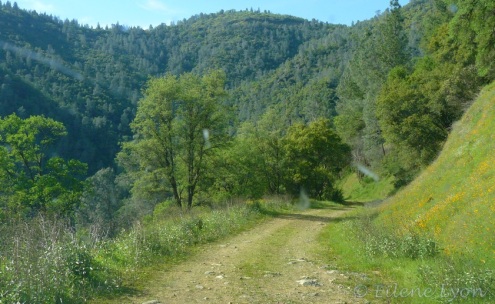

Georgetown is tiny and lovely. I stayed at the American River Inn, a B & B built and run as the American Hotel in 1853. I had a decadent soak in their outdoor hot tub before heading over to the Georgetown Hotel and Saloon for an amazingly high-quality dinner and a brew.

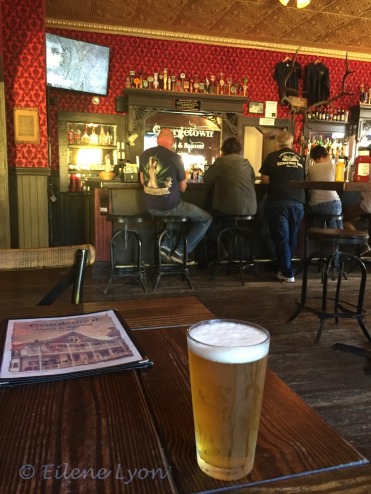
The cemetery was a short walk away and I photographed some of the old headstones from the early days.
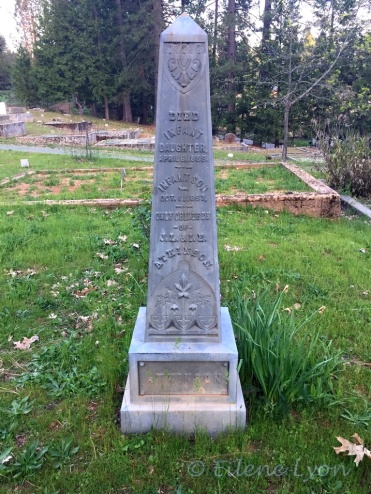
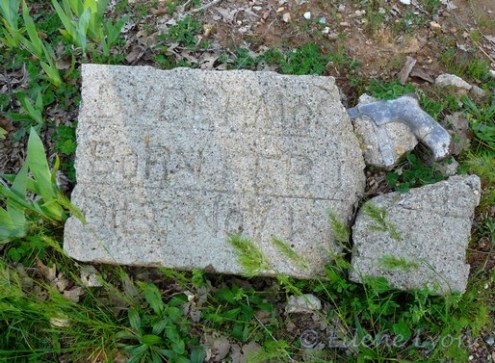
I ended up staying a second night, needing to take my car into Placerville to check a grinding noise from my front wheel. What I thought might be a bad bearing turned into a set of new brakes. Good thing because it cost a lot less, but I ended up wandering in town all day. That turned out to be less than stimulating. I did meet a couple locals while having a beer and the conversation was…different. But the two gentlemen were game for discussing history, genealogy, and writing, my pet subjects.
The next morning, I took the 11-mile drive to Coloma. This town is located on the South Fork of the American River at the site of “Captain” John Sutter’s mill, where James Marshall discovered gold on January 24, 1848. The epicenter of the gold rush, you could say. Certainly it was a must-see stop on my tour. After that it was a drive over the Sierras to Reno and on home to Colorado.
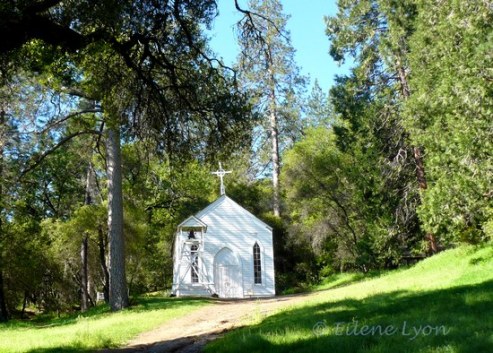
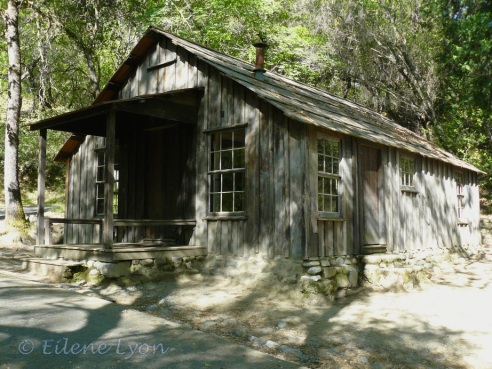
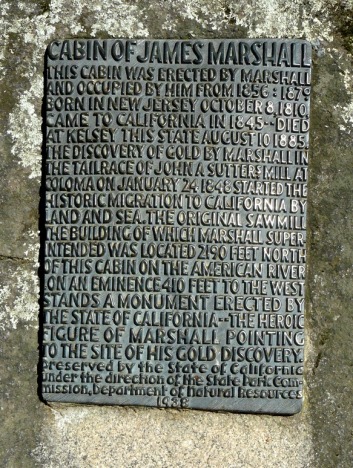
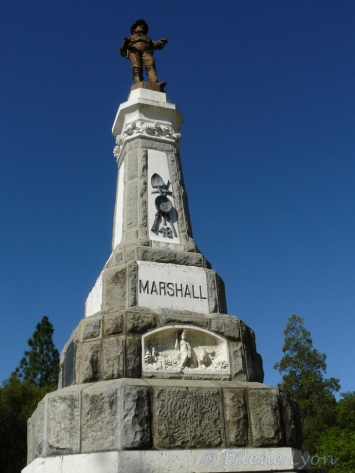
Feature image: Monument to Sutter’s Mill on the South Fork of the American River at Coloma.
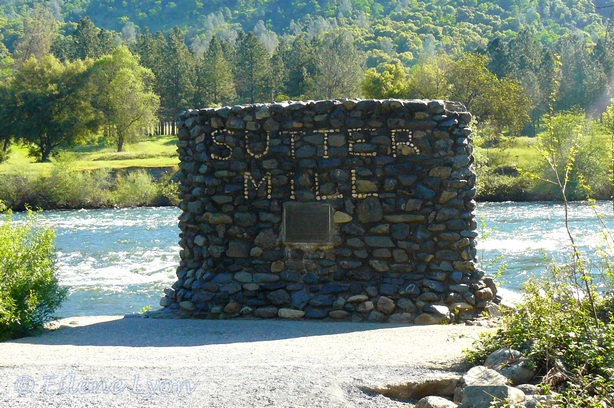
That’s a fun little detour. I’ve stumbled across some old mining claims here in Washington. How did they get all that stuff in there? Really quite amazing.
A few years ago I was backpacking from Cle Elum to Leavenworth, going cross country from Cradle lake down snowall basin I found an old camp in a remote place that made you feel like nobody has ever been there. Pretty remote. I found an old growth tree with a large carve-out on it and with the names of three guys—it said “Elk Camp 1938” So much for being the first, again.
LikeLiked by 2 people
That has happened to me many times: oh no human has ever set foot on this spot – whoops, what’s that? Definitely human!
LikeLiked by 1 person
It’s easier to spot the white man camps because you can always find trash. I’m sure the Nez Perce beat any others to the spot. A lot of the names in the area came from sahaptin, which is nearly extinct now and mostly lives on in some bastardized place-names.
LikeLiked by 2 people
Once I spotted a white bird wing wired from a tree branch on a steep scree slope. Bizarre.
LikeLiked by 2 people
So much amazing history!!
LikeLiked by 1 person
The gold rush was a true phenomenon – a mass migration like the world had never seen to that point – and mostly male!
LikeLiked by 2 people
You had me at Sutters Mill….when we to San Fran we didn’t have much time to do historic….need to go back to that area!
LikeLiked by 2 people
I’m not much of a city person, but I really do like SF. The gold country really appeals to me though – mountains and rivers, and quaint little towns.
LikeLiked by 2 people
I love everything north of LA…..
LikeLiked by 1 person
👍
LikeLiked by 1 person
I love that stagecoach! And I must confess I had no idea there was a variation to the color of gold depending on where it came from.
Cool little side note. There is a beautiful hotel and restaurant in downtown Lititz, Pa named in honor of Sutter. He spent the last few years of his life in Lititz. We had our wedding reception there many years ago.
LikeLiked by 2 people
There’s some trivia for you! Both Sutter and Marshall died poor. The gold rush ruined Sutter’s California “empire.”
LikeLiked by 1 person
Their bubbles burst.
LikeLiked by 1 person
Pop!!
LikeLiked by 1 person
Buahahaha!
LikeLiked by 1 person
I appreciated the stage coach as well because it was built in Concord, New Hampshire, which is only thirty miles from where I live.
LikeLiked by 2 people
Do they have a stagecoach museum there?
LikeLiked by 1 person
Not that I know of. There are coaches at various museums throughout New England. I know I’ve seen a couple of them; I just don’t remember where.
LikeLiked by 1 person
How cool is that?!
LikeLiked by 2 people
Your trips sound like such fun! Also, an outdoor hot tub at an inn? That’s the life!
LikeLiked by 2 people
Yes, it was a huge one – all to myself!
LikeLiked by 1 person
I enjoyed the tour to a part of the country I’ve never been!
LikeLiked by 1 person
Hope you get to go someday!
LikeLiked by 1 person
I like those unplanned trips. Sometimes you find some hidden gems!
LikeLiked by 1 person
I’m sure I’d enjoy exploring more of that area – and probably will!
LikeLiked by 1 person
I love wandering in old cemeteries, the markers are often so interesting, though they can tell such sad tales. Have to wonder about that gun!
LikeLiked by 2 people
It was quite strange! Like you say, no shortage of sad tales in a cemetery. Makes one appreciate being among the breathing.
LikeLiked by 2 people
That B&B is so cute! I wish Britain did more whimsical Victorian architecture, instead of bleak and imposing Victorian (I do like both, but American Victorian is just so much more colourful and charming). The Wells Fargo Museum looks great too, though I worry a simulated stagecoach ride would give me motion sickness!
LikeLiked by 2 people
LOL – it was pretty tame.
LikeLiked by 1 person